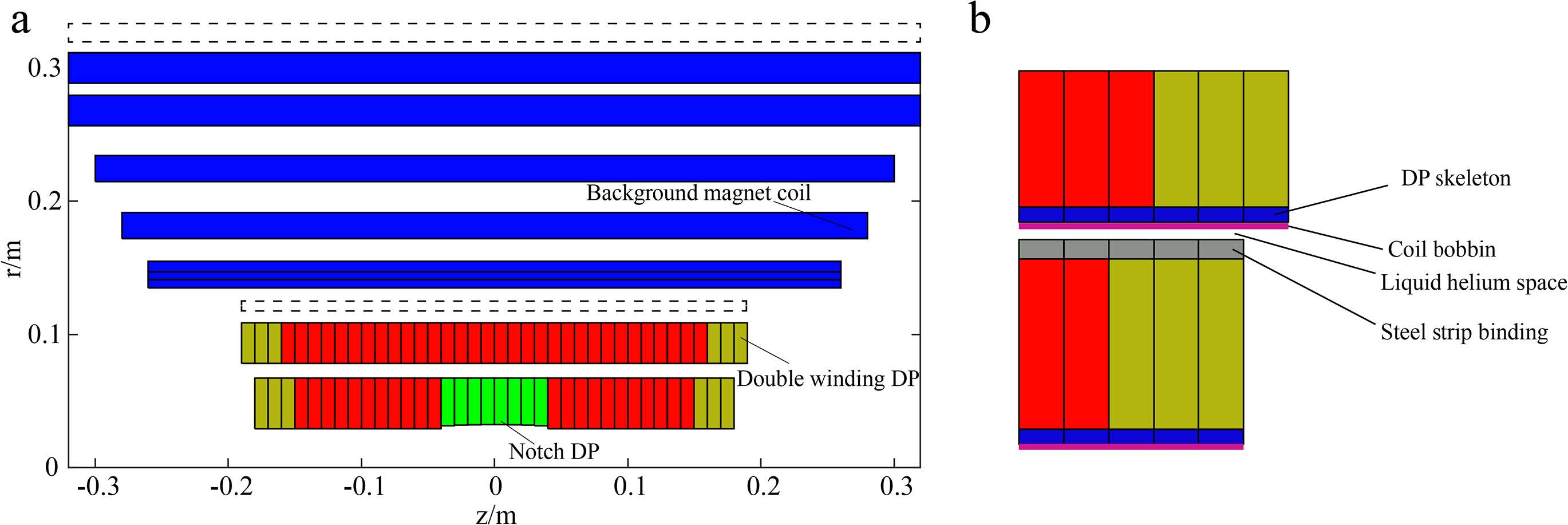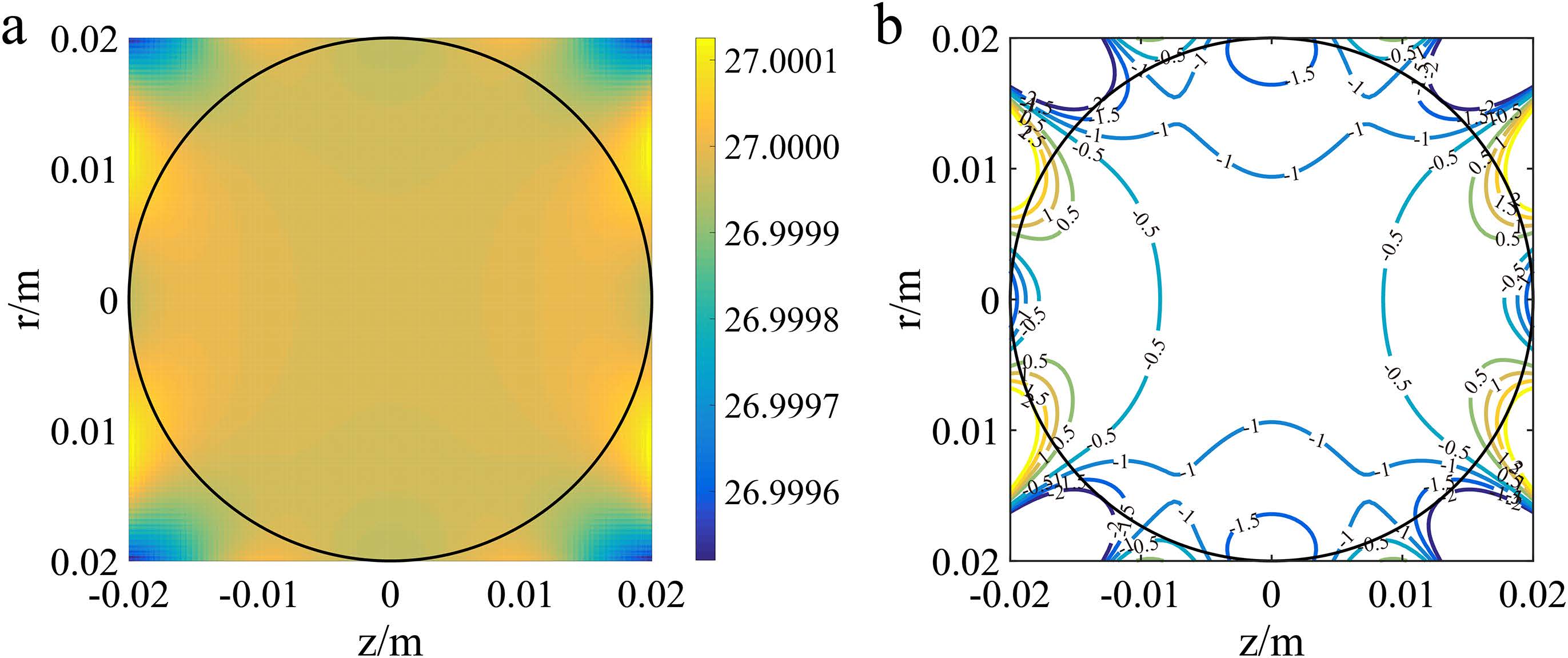IEECAS is manufacturing a 27 T NMR superconducting magnet system.
Nuclear magnetic resonance (NMR) is an important tool for the analysis of material structures.
The development of high field nuclear magnetic resonance (NMR) technology is a feasible way to improve the detection level of materials by significantly improving the resolution and sensitivity [1,2].
Although the world's major applied superconducting laboratories have announced the research results of superconducting magnets above 30T in recent years, the shimming work of extremely high field magnets has not made progress that can be widely recognized [16–21]. The Bruker corporation announced a successful launch of a 1.2 GHz commercial NMR spectrometer, the corresponding shimming technique has not been fully reported [22].
IEECAS is manufacturing a 27 T superconducting magnet system with a 40 mm DSV size, which will be used in the high-field NMR spectrometer, a part of the Synergetic Extreme Condition User Facility (SECUF) of China.
An LTS/HTS hybrid system is used to generate a 27T magnetic field, in which The LTS is provided by Oxford Instruments and the HTS insert magnet adopted ${Bi_2Sr_2Ca_2Cu_3O_x}$ tape [17,23–29].
Soaked in liquid helium, the operation current of the HTS magnet is 241.8 A, and the current margin amounted to 45.64%.
The HTS insert magnet composed of 2 coils that contain 36 DPs (the inner coil) and 38 DPs (the outer coil) respectively. At the ends of the coils, a double-winding scheme was applied to increase the current margin so as to augment the magnet stability. The HTS magnet adopted notch DP optimization to improve the magneticfield homogeneity over the central area. A series of shimming coils are used to shape the magnetic field to meet the requirements of NMR spectrometer.

Illustration of the hybrid magnet coils: (a) HTS insert magnet DPs with LTS background magnet coils after notch DP optimization. The dashed region is reserved for shim coils, where the inner region is for zonal coils and the outer one is for tesseral coils; (b) a sketch on the structural layout of the DP coils.
Notch DPs are optimized to adjust the magnetic field in the central DSV (40 mm).
The maximum perpendicular magnetic field is 3.50 T, which locate in the DPs adjacent to the double winding ones.
The maximum hoop stress of HTS magnet is reduced from 316 MPa to only 260 MPa by binding DP coil with stainless steel strip, which is far lower than the allowable stress level of 400 MPa.
The first and second order shim coils are designed for hybrid LTS/HTS magnet systems. There are a total of 8 shim coils, including 2 Nb3Sn zonal coils and 6 NbTi tesseral coils.
The zonal coils are located between the HTS insert magnet and the LTS background magnet. The tesseral coils are placed outside the background magnet.
Multilayer winding structure are applied in the shim coils to increase the shim sensitivity.
The 27 T NMR spectrometer is currently progressing to the middle of the project. We expect to be able to put this system into use in 2022. The high-uniformity high-field magnet system has considerable application prospects considering its operating cost, reliability and performance.

Magnetic field profile of the hybrid superconducting magnet: (a) magnetic field distribution over the central area (unit: T) and (b) magnetic field deviation over the central area (unit: ppm) .
[1] Gruetter R et al 1998 Resolution improvements inin Vivo1H NMR spectra with increased magnetic field strength J. Magn. Reson. 135 260–4
[2] Moser E, Laistler E, Schmitt F and Kontaxis G 2017 Ultra-high field NMR and MRI—the role of magnet technology to increase sensitivity and specificity Frontiers Phys. 5 1–15
[16] Markiewicz W D, et al 2012 Design of a superconducting 32 T magnet with REBCO high field coils IEEE Trans. Appl. Supercond. 22 4300704–4300704
[17] Weijers H W et al 2014 Progress in the development of a superconducting 32 T magnet with REBCO high field coils IEEE Trans. Appl. Supercond. 24 1–5
[18] Weijers H W et al 2010 High field magnets with HTS conductors IEEE Trans. Appl. Supercond. 20 576–82
[19] Bird M D et al 2009 The NHMFL hybrid magnet projects IEEE Trans. Appl. Supercond. 19 1612–16
[20] Miller J R 2003 The NHMFL 45-T hybrid magnet system: past, present, and future IEEE Trans. Appl. Supercond. 13 1385–90
[21] Dixon I R, Bird M D and Bole S 2002 End effects in the NHMFL 45 T hybrid resistive insert IEEE Trans. Appl. Supercond. 12 452–5
[22] Bruker 1.2 GHz NMR spectrometer https://ir.bruker.com/press-releases/press-release-details/2019/BrukerAnnounces-Worlds-First-12-GHz-High-ResolutionProtein-NMR-Data/default.aspx.
[23] Twin A et al 2007 Present and future applications for advanced superconducting materials in high field magnets IEEE Trans. Appl. Supercond. 17 2295–8
[24] Yang Y et al 2011 Quench characteristics of bi2212 solenoid insert coils in background field up to 20 T IEEE Trans. Appl. Supercond. 21 2432–5
[25] Melhem Z, Ball S and Chappell S 2012 Development of Bi-2212 insert coils for ultra high field magnet applications Phys. Procedia 36 805–11
[26] Haigun L, Bobrov E S, Bascunan J, Seung-yong H and Iwasa Y 2005 An HTS insert for phase 2 of a 3-phase 1-GHz LTS/HTS NMR magnet IEEE Trans. Appl. Supercond. 15 1299–302
[27] Bascunan J, Haigun L, Bobrov E S and Iwasa Y 2003 A lowand high-temperature superconducting NMR magnet: design and performance results IEEE Trans. Appl. Supercond. 13 1550–3
[28] Lee H, Bascunan J and Iwasa Y 2003 A high-temperature superconducting double-pancake insert for an NMR magnet IEEE Trans. Appl. Supercond. 13 1546–9
[29] Piao R et al 2019 Design and development of a compact 1 GHz (23.5 T)-Class NMR magnet with Bi-2223 inner coils IEEE Trans. Appl. Supercond. 29 1–7

